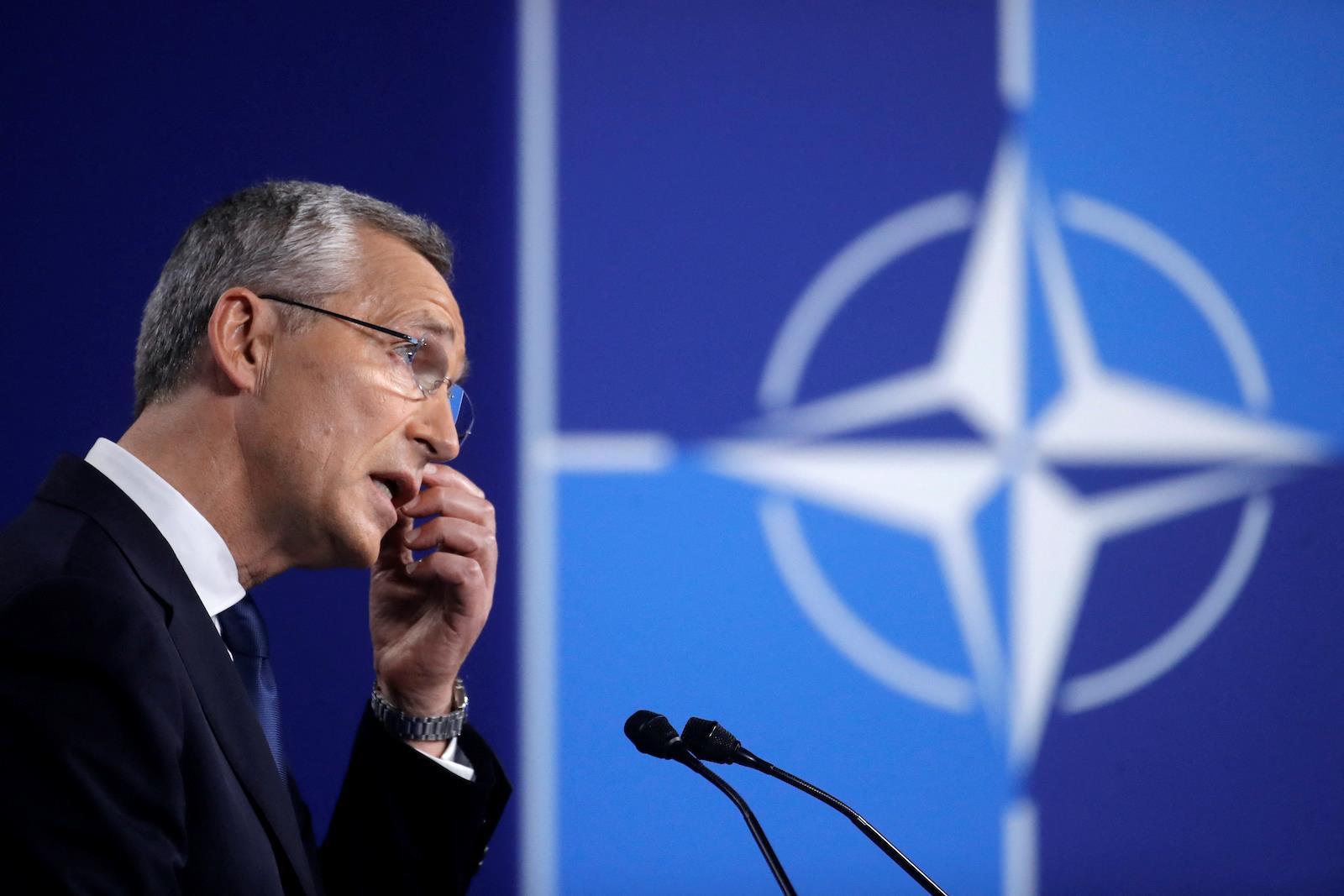(MENAFN- Asia Times) Investigative reporter Seymour Hersh said an odd thing on March 7 when tass asked him to compare his version of the Nordstream 1 and 2 pipeline explosions (US Navy divers did it, he had reported February 8) with a newly released version from the New York Times and german media that points to non-governmental Ukrainians as culprits.
“I don't want to get into it,” Hersh replied to the Russian wire service.“You should decide for yourself. It's up to you.” The TASS reporter persisted, asking if Hersh thought the New York Times account had come in response to Hersh's own investigation. He gave the same reply, saying people should come to their own conclusions.
That was pretty clever. Read both versions and you may conclude that they could fit together to point to a plausible account of how, as war raged over Ukraine, three pipelines supplying Germany's gas supply from Russia were blown up before Vladimir Putin could use their existence to try to lure Germany out of the pro-Ukraine camp. Before the war, over half of Germany's gas imports came from Russia.
Assemble a whole from the two versions and you might come up with this: On US President Joe Biden's orders, US government covert types put together and with Norwegian help carried out the operation (that's Hersh's story); to avoid detection, they left some clues pointing elsewhere, to Ukrainians or“pro-Ukrainians” – the main clue mentioned so far being that the yacht from which the divers worked could be traced back to a yacht-rental company in Poland, a company owned by Ukrainians.
The German media account
What you might end up suspecting is a false flag.
Die Zeit, a leading German newspaper that is part of a media investigative consortium that talked with officials in several countries to put together its narrative, acknowledges the possibility thusly:“Even if traces lead to Ukraine, the investigators have not yet been able to find out who commissioned the suspected group of perpetrators. In international security circles, it is not ruled out that it could also be a false flag operation.”
The paper hastens to add that investigators“have apparently not found evidence that confirms such a scenario.” But“the nationalities of the perpetrators are apparently unclear” since they used“professionally forged passports.”
Die Zeit narrows the gang down to“a team of six people. It is said to have been five men and one woman.” Functionally, they were“a captain, two divers, two diving assistants and a doctor.”
Like the New York Times, the German media outlets suggest that the demolition crew consisted of Ukrainian civilians from a non-governmental“commando” force opposed to the Russian invasion.
There's no point in asking for a smoking gun at this point. His critics point out that Hersh – who has acknowledged he opposed NATO expansion into the former Soviet Union and who is not known to be a fan of allied efforts to help Ukraine fight the war – based his own account on a single unnamed US government source. Likewise, the German media organizations that make up the investigative consortium name no sources.
Die Zeit reports that“a Western secret service is said to have sent a tip to European partner services in the autumn, shortly after the destruction,” talking about Ukrainian commando responsibility for the destruction.“After that, there are said to have been further intelligence indications that a pro-Ukrainian group could be responsible.”
A Kremlin spokesperson on March 8 was having none of it, telling journalists that“Western media reports which exonerate NATO state actors from involvement in the explosions that ruptured the Nord Stream 1 and 2 gas pipelines have the hallmarks of a synchronized misinformation campaign.”
The Hersh version
Hersh's version is that US Navy divers,“operating under the cover of a widely publicized mid-summer NATO exercise known as BALTOPS 22, planted the remotely triggered explosives that, three months later, destroyed three of the four Nord Stream pipelines, according to a source with direct knowledge of the operational planning.”
Remarkable for its detail, the Hersh account claims that“Biden's decision to sabotage the pipelines came after more than nine months of highly secret back-and-forth debate inside Washington's national security community about how to best achieve that goal. For much of that time, the issue was not whether to do the mission, but how to get it done with no overt clue as to who was responsible.”
The debate and preparations proceeded from December 2021 when Russia was marshaling its troops, preparing to strike Ukraine from Belarus and Crimea, Hersh writes.“As long as Europe remained dependent on the pipelines for cheap natural gas, Washington was afraid that countries like Germany would be reluctant to supply Ukraine with the money and weapons it needed to defeat Russia,” he notes.

Seymour Hersh in a file photo. Image: Screengrab / Youtube
The interagency task force thus assembled“was initially skeptical of the CIA's enthusiasm for a covert deep-sea attack. There were too many unanswered questions. The waters of the Baltic Sea were heavily patrolled by the Russian navy, and there were no oil rigs that could be used as cover for a diving operation,” Hersh writes.
“'It would be a goat fuck,' the agency was told. Throughout 'all of this scheming,' the source said, 'some working guys in the CIA and the State Department were saying,“Don't do this. It's stupid and will be a political nightmare if it comes out.”'
“Nevertheless, in early 2022, the CIA working group reported back to [National Security Advisor Jake] Sullivan's interagency group: 'We have a way to blow up the pipelines.' What came next was stunning. On February 7, less than three weeks before the seemingly inevitable Russian invasion of Ukraine, Biden met in his White House office with German Chancellor Olaf Scholz, who, after some wobbling, was now firmly on the American team. At the press briefing that followed, Biden defiantly said, 'If Russia invades ... there will be no longer a Nord Stream 2. We will bring an end to it.'”
Undersecretary of State Victoria Nuland gave a similar warning, Hersh says, and lower-ranking officials were concerned by what they viewed as their seniors' indiscretion.
The operation was headquartered in Norway, whose navy, Hersh says,
As cover, Hersh writes, the Americans had Sixth Fleet planners add to the annual naval maneuvers, already scheduled for that time and place, a research and development exercise involving“NATO teams of divers planting mines, with competing teams using the latest underwater technology to find and destroy them.... The C4 explosives would be in place by the end of BALTOPS22.”
After a decent interval of three months,
Fact-checkers and Hersh
critics found what they said were some errors in Hersh's version. Here is Wikipedia on that:

NATO Secretary-General Jens Stoltenberg gives a press conference during a NATO summit at the North Atlantic Treaty Organization headquarters in Brussels on June 14, 2021. Photo: AFP / Olivier Hoslet
If the divers' platform wasn't an Alta-class minesweeper, then was it a yacht rented from a Ukrainian-owned company in Poland – the vessel the German media/European intel account mentions?
The German account tells us that the saboteurs on their rented yacht proceeded to the dive location on September 6, 2022, from the German Baltic Sea port of Rostock after loading their equipment aboard there from a delivery truck. Rostok's a long day's sail (325 nautical miles) from Gdynia, the major Polish port on the Baltic (in case that's where, in Poland, the Ukrainian-owned yacht rental company is situated).
The New York Times
Disclaimer here: In my 54 years in the news business, I have generally avoided asking spooks for help. I have nothing against them and realize they are colleagues of sorts, but I can recall only a couple of cases when I sought their help. They have their jobs and I have mine. I certainly don't rush to get their version of events whenever something happens. I assume their version is whatever their agencies have told them should be their version so I prefer to spend my time getting my own version from more direct sources.
That may help to explain why the new york times piece bothers me. The reporters – maybe the spooks are their beat and they have to get along, or else? – seem overeager to peddle Washington's version.
I'd advise checking your wallet if you hear from your pipe-smoking spook source that“officials who have reviewed the intelligence said they believed the saboteurs were most likely Ukrainian or Russian nationals or some combination of the two. US officials said no American or British nationals were involved.”
Would you credit“US officials who have reviewed the new intelligence” and who say that“the explosives were most likely planted with the help of experienced divers who did not appear to be working for military or intelligence services”?
After all that Seymour Hersh has told you?
Well, at least they have a policy at the New York Times on when they can emulate Seymour Hersh (born 1937, a real veteran with a record) and stick to anonymous sources:
Whew. What a relief.
Bradley K Martin is a veteran foreign correspondent.